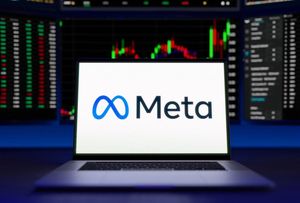
New York, NY – October 20, 2025 – In a series of influential analyses, global financial titan Citibank (NYSE: C) has positioned stablecoins as the unequivocal catalyst for the next monumental growth phase in the virtual asset ecosystem. With reports like "Digital Dollar" released on April 25, 2025, and the subsequent "Stablecoins 2030" in September/October 2025, the banking giant has not only validated the burgeoning importance of stable digital currencies but also significantly raised its projections for their market capitalization, signaling a transformative era for blockchain technology.
Citibank's insights arrive amidst a period of accelerated institutional adoption and robust market expansion in the first half of 2025, which saw stablecoin issuance volumes surge from approximately $200 billion to $280 billion. This upward trajectory compelled the bank to revise its 2030 forecasts, now predicting a base case of $1.9 trillion in stablecoin issuance, with an optimistic scenario reaching an astounding $4.0 trillion. The analysis underscores that stablecoins are not merely a niche crypto product but a foundational element poised to "reimagine" the existing financial system, akin to the transformative impact of money market funds in the 1980s. This pronouncement from a major financial institution reverberates across the crypto landscape, reinforcing the long-term viability and strategic importance of these dollar-pegged digital assets.
Market Impact and Price Action
While Citibank's reports did not directly trigger immediate, pinpointed price movements for individual tokens, the overarching sentiment they convey—one of sustained growth and institutional confidence—has undoubtedly contributed to the broader positive market momentum observed throughout 2025. The reports themselves note that "Cryptocurrency company listings, record fundraising and breakthroughs in technology all suggest that institutional adoption is accelerating," indicating that the market's reaction is an ongoing process of integration and expansion, rather than a singular event. The upward revision of forecasts was a direct response to "strong growth in the market in the past six months," implying a virtuous cycle where positive market performance informs and validates bullish institutional outlooks.
Stablecoins currently command a significant 5-10% of the total virtual asset market capitalization, functioning as a critical on-ramp for new capital entering the crypto space. Citibank projects that a base case of $1.9 trillion in stablecoin issuance by 2030 could facilitate nearly $100 trillion in annual transaction activity, dwarfing current volumes and underscoring their potential as a global payment rail. This projected surge in utility and liquidity far surpasses any direct price action reaction to the reports, instead highlighting the profound structural shifts stablecoins are poised to enact within the financial infrastructure. The comparison to money market funds of the 1980s further contextualizes this impact, suggesting a fundamental re-calibration of how value is stored and exchanged on a global scale.
Community and Ecosystem Response
The crypto community, while always eager for institutional validation, views Citibank's analyses as a significant affirmation of stablecoins' indispensable role. While specific social media outbursts or influencer endorsements directly tied to the report's release weren't widely publicized, the general "accelerated institutional adoption" mentioned by Citibank resonates deeply within crypto Twitter and Reddit. The notion that stablecoins are driving a "ChatGPT moment" for blockchain in finance is a powerful narrative, fostering optimism about the technology's mainstream integration.
Within the broader ecosystem, the stablecoin boom is undeniably a key driver of activity, particularly on the Ethereum network. DeFi protocols, which heavily rely on stablecoins for liquidity, lending, and trading, stand to benefit immensely from the projected growth. However, Citibank's foresight also introduces a note of caution: if stablecoin issuers begin to develop their own dedicated blockchains, Ethereum's current dominance as the primary settlement layer could face challenges, though network effects are likely to maintain its short-term advantage. This highlights a dynamic interplay between stablecoin growth and underlying blockchain infrastructure, prompting ongoing innovation and competition among layer-1 and layer-2 solutions.
What's Next for Crypto
The implications of Citibank's analysis are far-reaching for the crypto market's short and long-term trajectory. The projected $1.9 trillion to $4.0 trillion in stablecoin issuance by 2030 paints a picture of unprecedented scale, positioning stablecoins not just as a trading instrument but as a global reserve asset and a primary vehicle for B2B payments and remittances. Citibank anticipates stablecoins could capture 20-25% of B2B payments and 10-20% of remittances by 2030, driven by their inherent speed, low cost, and 24/7 availability.
A critical catalyst for this growth is the establishment of a clear US regulatory framework for stablecoins. Such a framework is expected to unlock new demand and potentially position stablecoin issuers as major holders of US Treasury securities, further intertwining digital assets with traditional finance. Strategic considerations for projects and investors include monitoring the development of "bank tokens" or tokenized deposits, which Citibank predicts could even surpass stablecoins in transaction volume by 2030, signaling a future where various forms of digital money coexist and compete. The need for robust infrastructure—fast on/off ramps, interoperability, and secure custody solutions—will be paramount for stablecoins to achieve their full scalability potential.
Bottom Line
Citibank's comprehensive analysis delivers a powerful message: stablecoins are more than just a bridge from fiat to crypto; they are evolving into a fundamental component of the global financial architecture. Their role as a stable store of value, particularly in emerging markets grappling with inflation, and as an efficient transaction vehicle, solidifies their long-term significance. The bank's projections emphasize that stablecoins, predominantly dollar-denominated, are poised to substitute for some overseas and domestic US currency holdings and form part of banks' short-term liquidity.
For crypto investors and enthusiasts, the key takeaway is the validation of stablecoins as a critical driver of mainstream adoption and financial innovation. The journey ahead will be characterized by continued demand for dollar-pegged assets, intensified regulatory scrutiny and development (especially in the US), and the ongoing evolution of underlying blockchain infrastructure. Important metrics to monitor include the pace of stablecoin issuance towards Citibank's 2030 targets, the progress of regulatory frameworks, and the market share stablecoins gain in B2B payments and remittances. Citibank's vision reinforces that the virtual asset space is not merely expanding but maturing into a sophisticated ecosystem capable of reshaping global finance.
This article is for informational purposes only and does not constitute financial or investment advice. Cryptocurrency investments carry significant risk.






